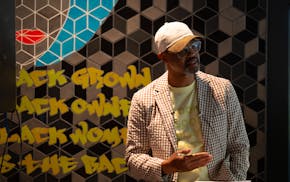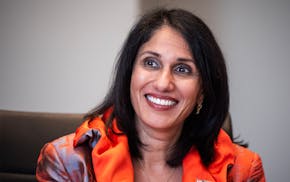It not only takes a village to raise a child, it takes one to live well in retirement.
Twenty or so years ago, as property developers began transforming empty warehouses and mills on both sides of the Mississippi River in downtown Minneapolis, some of the first people they recruited into new apartments and condominiums were retirees. Many were well-off, some were single and all were adventurous.
Some of those retirees realized they wanted to stay near the riverfront for the rest of their lives. To do so, they started building the social infrastructure that's available at retirement homes and other senior living communities.
"We began to realize it was really a community that made the difference, a community you could engage with in lots of different ways," said Marcia Townley, who moved back to Minnesota in 2008 after spending the last part of her career as a philanthropy executive in New York.
Shortly after her return, she became a co-founder of Mill City Commons, a group designed to provide aging-in-place support to retirees in the then-new properties on both sides of the river.
Today, about 225 people belong to the nonprofit organization, and most live within a few blocks of the river, either downtown or across in Northeast. A growing number have joined from other parts of the city and even some suburbs. They pay about $60 a month, while those on fixed incomes pay about half that, to access services that include help with transportation and a cache of medical equipment.
"They pioneered a vision of central riverfront living," Minneapolis Mayor Jacob Frey said. "They didn't just talk about a vision. They decided to plant roots there."
Today, about 55,000 people live downtown, after the revitalization that began along the riverfront spread into the North Loop and across the central business district. Guthrie Theater's move to the riverfront, and construction of new stadiums for the Twins and Vikings, helped draw more people downtown.
"We're all sort of immigrants, immigrants to the river," Allan Burdick, a longtime member, told me last Saturday when I joined the weekly Mill City Commons breakfast at Elsie's, a restaurant and bowling alley a couple of blocks from the river.
The breakfasts anchor a schedule of events that is packed every week. Once or twice a month, Mill City Commons members arrange for visits to local businesses or institutions. So far this month, they have toured Red Lake Nation College and got a behind-the-scenes look at the downtown library.
There are walks along the river and through the skyways, along with visits to sporting events. And there are also lectures and talks from an array of business and political figures, along with professors and teachers. Coming up Thursday, a panel of local political scientists and journalists will discuss the outcome of the election with the group.
"It's a little bit like a cruise ship," said Peter Lefferts, who with his wife, Jane, joined Mill City Commons to stay active after a career in financial services and affordable housing that included stints in Venezuela, Jamaica and Puerto Rico. "At this point of life, I find it hugely important to have this pipeline of people and friends."
Frey said he formally visits the group at least once a year and, since he also lives near the river, bumps into members of Mill City Commons every day. "I see them at the bar. I see them at a music concert. I see them at the Guthrie," Frey said. "You know how DeLaSalle High School has the slogan 'Islanders are everywhere'? Same thing with Mill City Commons."
And when he's asked to attend a formal Q&A to discuss city issues, Frey said, "I always know I've got to be prepared. They will have read everything, probably from multiple points of view, definitely from different media sources. They will have a full spectrum of understanding that few groups are able to mobilize."
The group modeled itself on one in Boston called Beacon Hill Village, which by the late 2000s had about 400 members. Nationwide, there are now about 300 or so similar groups in what has loosely been called "the village movement."
"I've looked at websites of other villages, and our programming is so rich and reflects the curiosity of our members to know what's going on and be involved in appropriate ways," said Penny Hunt, another co-founder.
As anyone who has been around a senior community knows, one of the most important elements about them is the availability of support and consolation as friends and relatives near the end of life. Townley is now learning that herself after a cancer diagnosis this year. For months, Mill City Commons members have taken turns driving her to and from a University of Minnesota clinic for chemotherapy.
Townley thanked them at the group's annual meeting this summer.
"She said she was reaping the rewards of something she worked so hard on," Hunt said. "They thought it was wonderful. Marcia is very admired but it rang true for a lot of people who aren't facing the kind of health issues that she is."
The two of them, and hundreds more, took a chance on downtown Minneapolis to live well to the end.
"Selfishly," Townley told me, "that's what I hoped would happen when we started this."

Ramstad: Minneapolis' Camden neighborhood is rising. Houston White wants to keep it that way.

Ramstad: Minnesota's big businesses are in crisis with a common problem

Ramstad: No business can 'eat' all the tariffs, not even Walmart

Ramstad: Donaldson is protected from tariff chaos after expanding globally the right way


